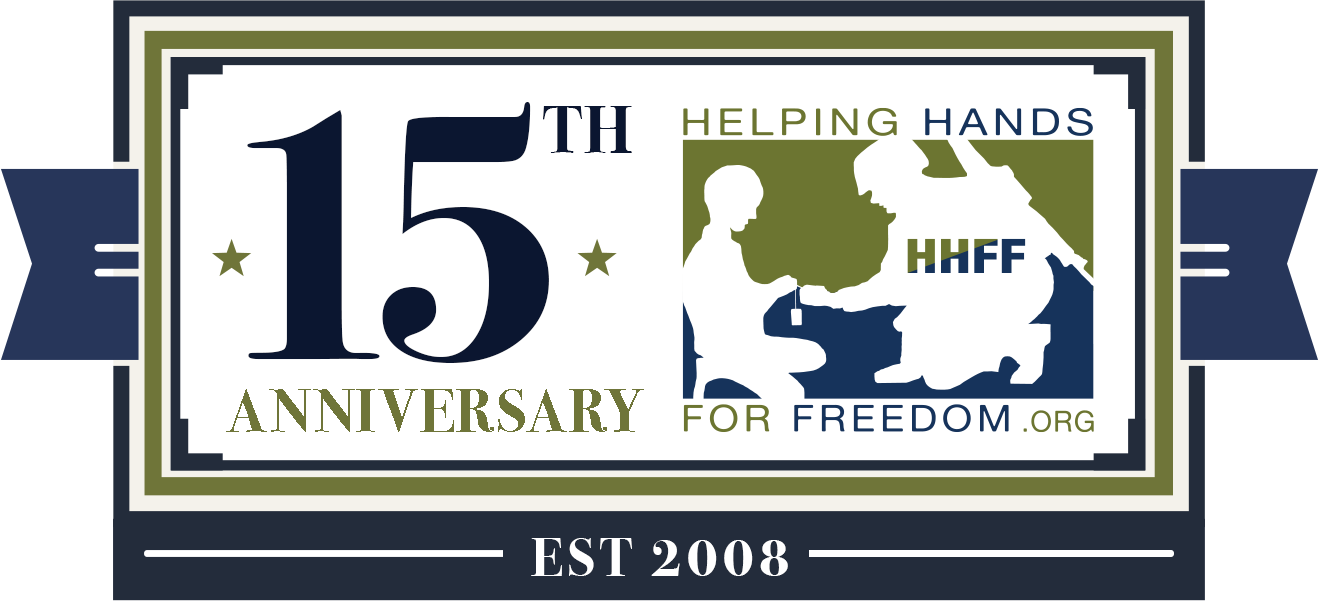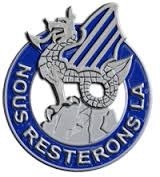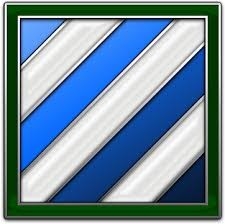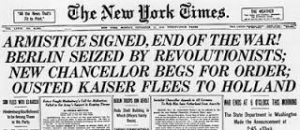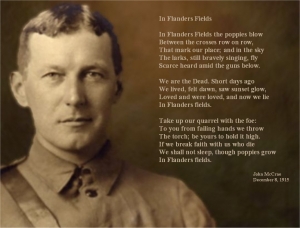Did you know that what we call Veterans Day was not always called that? In fact, it wasn’t always even commemorated on November 11th.
The history of Veterans Day began with America’s involvement in the “War to End all Wars.” The conflict that came to be known as the First World War engulfed Europe—and the globe—from 1914 to 1918. Nearly 40 million soldiers and civilians were casualties of the conflict, as were the German and Russian Empires.
When war broke out, the general consensus in America was that it was a “European War” and there was no need for the United States to become involved. Today, it may be hard for us to imagine an America that was isolationist and didn’t get involved in conflicts outside of the Americas. In 1914, however, the United States had no history of sending soldiers to foreign conflicts. And so, until 1917, the United States stayed out of the conflict militarily.
After a series of events almost too complicated to recount, the United States declared war on Germany, mobilized its armed forces, and went to battle on foreign soil. This was, in fact, the very first time American soldiers took part in a war on foreign soil.
Despite the fact that the United States was only in the war for approximately 18 months, and only participated in ground combat for 6 months, the United States army suffered 116,000 casualties. This massive casualty total shows the horrifying scope the of the war. To put that in perspective, that is twice the number of soldiers killed during the entire Vietnam War, and three times the number killed in Korea.
Rushed to the trenches, to help halt the massive German offensives of 1918 following the defeat and collapse of the Russian Empire, American soldiers fought valiantly. Through their numbers and bravery, American soldiers helped to steady the lines of British and French forces that had been worn down by years of slaughter. For their contribution to the defense of the strategic Marne River, the leader of the French Army, Marshall Foch, dubbed the U.S. 3rd Infantry Division “The Rock of the Marne,” a moniker the formation still proudly bears to this day.
After four horrific years of war, at the 11th minute of the 11th day of the 11th month, hostilities in Europe ceased. From this, November 11th, 1918 became known as Armistice Day.
The following year on November 11th, President Woodrow Wilson declared the day should be "filled with solemn pride in the heroism of those who died in the country’s service and with gratitude for the victory." However, it was not until May of 1938, 20 years later, that Congress made November 11th, Armistice Day, a yearly legal holiday.
Originally the idea was to honor the veterans of World War I. Unfortunately, the peace of the 1918 Armistice did not lead to an end of war, and by 1941 American soldiers were once again fighting in a global conflict. Following World War II, American servicemen once again went to war, this time in Korea. After these two conflicts, Congress honored the petition of veterans groups and renamed “Armistice Day” to Veterans Day, making it a day to honor all American veterans regardless of the conflict or location they had served.
In 1968, a further change came when Congress moved Veterans Day from Nov. 11th to the 4th Monday in October. However, this change only lasted four years, with President Ford moving the holiday back to November 11th, given the historical importance of that date.
Today, Veteran’s Day has become a day to honor all American service men and women who have served the United States in war, with a particular focus on living veterans.
In other parts of the world, especially Britain and the Commonwealth countries, Armistice Day is now known as Remembrance Day. The holiday is observed in honor of the veterans of the two World Wars. In these countries, two minutes of silence is typically observed at 11:11 a.m., remembering the silence that finally fell over the European battlefields in November 1918.
Although more recognizable in the Commonwealth countries, the poppy flower has become a symbol of Remembrance Day, and, here in the United States, with Memorial Day. This tradition originated directly from the battlefields of France, and, in particular, Flanders. The poppy was one of the very few flowers that would still bloom on the war-torn landscapes of the First World War battlefields. In May of 1915, a Canadian soldier immortalized the connection between the poppy and the casualties of the war with a poem, “In Flanders Fields.”
As a final thought, the war that led to the creation of Veteran’s Day is a war that has no official national monument to commemorate it. This is despite the historical significance of the war and the holiday. Given the contribution to the war in terms of manpower and resources, as well as the war being the first time in American history that our soldiers went to foreign lands to defend liberty, congress is currently working on proposals for a World War I memorial. The World War I Centennial Commission Act was passed by congress to find a workable solution for a monument.
Nearly 100 years have passed since America became involved in the war that led to the creation of Veterans Day, and there are now no living veterans of that conflict. As time passes from the end of the First World War, but also the many conflicts of the 20th century, Veteran’s Day represents a time to reflect and honor, and hopefully say “thank you” to a living veteran. It is their sacrifice, and the sacrifice of the countless millions who fought in the conflicts of the 20th century, that have enabled us to be a nation of liberty.
--Written by guest blogger, Jennifer Grant, Content Manager and Blogger for Americanflags.com.
